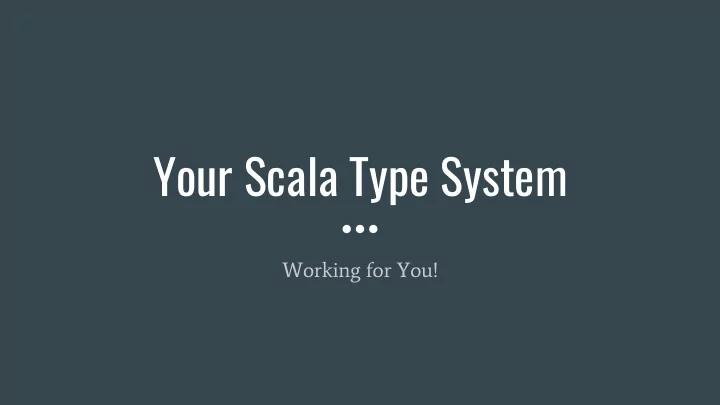

Your Scala Type System Working for You!
The Earth is not Flat But most of the ways we look at it are:
It's not exactly round either... The Earth has a bit of a "spare-tire" caused by its rotation This makes the math harder Some overly simple models ignore this Including one of the most widely used, Web Mercator (Google, Bing, etc.)
Referencing a Location on Earth GPS Latitude and Longitude Defined as 2 angles One perpendicular to the equator (with 0 running through London), -180 to 180 One parallel to the poles, -90 to 90 Combined, where they intersect the surface of the earth defines any point
This is great for points, lines and shapes As long as they are not too big/coarse Not very suitable for images though The problem for images is that as you move further North or South, the amount of distance covered by 1.0 degrees longitude changes At the equator, 1 degree longitude is about 69 miles, in San Jose it's about 55 miles, and in Anchorage, AK, 33 miles
Two Primary Types of Spatial Data Raster and Vector
Raster Images Tend To Assume Constant Measurements For processing, we usually want constant measurements for our pixels (for areas, distances, etc) This means we need to mathematically project the 3d Earth into a 2d flat system
Coordinate Reference Systems and Projections A Coordinate Reference System is anything that assigns coordinates to a location A projection is anything that mathematically projects between spatial models The projection (+ datum) defines how one CRS relates to another mathematically We can convert between the CRS (with varying amounts of error) Error tends to be smaller for vector data than for raster Therefore we resist transforming (or resampling) raster data more
Projection Examples Transverse Mercator Conical Polar
WGS 84 UTM Zones
The Importance of Enforcing CRS Many CRS space coordinates can overlap It's critical not to get them mixed up, or you will get the wrong data, sometimes undetectably!
What does most code do? Lots of redundant CRS checks, or they get the wrong CRS… Works, but it's runtime… We can do better.
Type Parameters are Part of the Type! E.g. Scala's Set (which is invariant)
This is not a talk on Scala variance But here's what you need to know for now: covariant vs invariant
CRS Types! Let's start with a simple definition You may be wondering why I didn't make this a case object...
We need that case class and its companion to do this… by doing this...
Type and definition in harmony We can now use a type parameter (compile time verified) and still look up the CRS definition at runtime (so we no longer need to pass it as a regular parameter):
Geometries have the CRS as part of the type
Now, the compiler has your back
I See a Flaw! You Don't Always Know the CRS at Compile Time
Reifying the CRS type from the existential
Other geometries
The API is simple, and hard to get wrong
Adding some more nuance
Now we can limit certain methods
Introducing Features Features are Geometries with Attributes ● ● Attributes are fairly loose, and in geotools are untyped ( Map[String, Any] ) This leads to all sorts of abuses ● ● We can do better But it would be good to keep a simple "Attach something" capability ●
Feature Definition Geometry is a type parameter, as is CRS ● Attributes is a covariant type parameter ● We can map over the type parameter to obtain a new feature with different ● attributes and attribute type, but the same CRS and Geometry
Simple Covariant Behavior
Type-Indexed Maps (TMaps)
Using TMaps
TMap Covariance
TMaps as Feature Attributes
In Use
So why the implicit extension class?
Use =:= instead of <:< ? T is Covariant, so <:< must be used, =:= cannot be ● <:< is too loose, so inference fails us ● implicit class RichFeature "fixes" type T first, then addAttr works with inference ●
Safety Latches
Like This Idea? We have more, and we're hiring… careers@cibotechnologies.com http://www.cibotechnologies.com/careers/
And if you would like to brush up on your types (and more) Escalate Software does training, online and in-person: http://www.escalatesoft.com/training https://www.udemy.com/user/richard-wall/
Recommend
More recommend